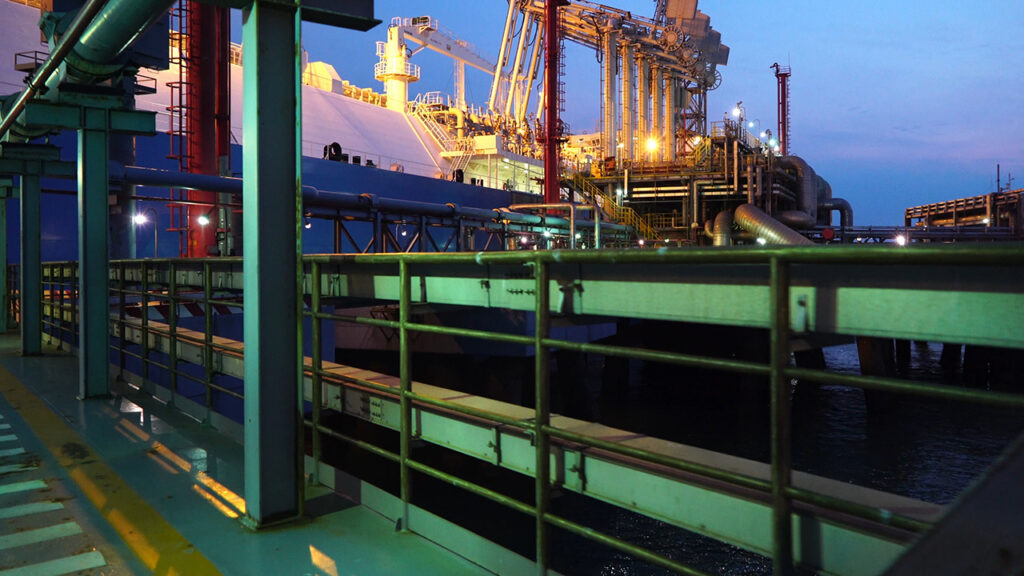Packing a punch – the new Cargo Transport Units code, October 2014
This Article first appeared in the October 2014 issue of Port Strategy and is reproduced with permission. www.portstrategy.com
Cargo Transport Units (CTUs) are designed with the intention of being versatile due to the requirement to adapt to a variety of modes of transport. They do so by being rolled or lifted from one form of transport to another. A swap body can be carried on a road vehicle or railway wagon. A deep sea container can be carried on a road vehicle, railway wagon, inland barge or seagoing vessel for example.
This multi-modality has contributed to carelessness in certain cases as it promotes an attitude of ‘out of sight, out of mind’. Once those who packed the container at origin close the doors, they generally feel relinquished of all responsibility. The modern container passes through so many handling processes on its subsequent journey that it can be difficult to pinpoint liability for an incident even if poor packing is suspected. The consequences of this careless approach are significant as one third of all damage to cargo is caused by incidents relating to poor packing.
In a 2011 survey by the International Labour Organisation (ILO) regarding adherence to the 1997 IMO/ILO/UNECE “Guidelines for packing of cargo transport units (CTUs)” (1997 Guidelines), only 15% of respondents replied stating that they commonly fulfil the obligations the 1997 Code advocates. There is thus clear scope for the introduction of more stringent guidelines which aim to bind the various parties of the maritime supply chain, and in doing so promote safer behaviour in practice.
The new CTU Code
The new IMO/ILO/UNECE Code of Practice for the packing of CTUs is fairly comprehensive in nature. It imposes many key common sense requirements upon a number of parties, including:
- Arrange for a safe working environment.
- Check that the CTU and any securing equipment are in sound condition.
- Select the most appropriate CTU type for the specific cargo.
- Pack dangerous goods near the doors of the CTU where possible.
- Do not concentrate heavy cargo over small areas of the floor.
- Do not use securing or protection equipment which is incompatible with the cargo.
- Affix required placards, marks and signs on the exterior of the CTU.
In order to counter the ‘out of sight, out of mind’ culture, the CTU Code sets out a clear chain of responsibility. This chain attaches specific obligations to the various parties in the maritime supply chain: consignor, packer, shipper, road haulier, rail haulier and consignee are some of the key parties who would be obliged to follow guidelines laid out under the CTU Code. This is a positive change, as where the cause of the cargo damage can be identified then authorities will more easily be able to pinpoint liability on a particular party. It is hoped that the increased likelihood of accountability will promote higher standards of CTU transportation.
Enforceability
The CTU Code will be one step behind a mandatory UN instrument. It has been approved by the UNECE and received approval by the International Maritime Organisation’s (IMO) Maritime Safety Committee earlier this year. The ILO’s approval is expected in November 2014, at which time the CTU Code will be officially published1 and replace the 1997 Guidelines. Critics argue that as a code of practice it has little weight within the industry.
However, it is hoped that legislators around the world will acknowledge the benefits of the CTU Code and enshrine its recommendations into domestic law. It is hoped that countries will formally endorse the CTU Code which furthers the argument that it is likely to be evidence of best practice when CTU claims arrive at court. It is this characteristic which may encourage numerous countries to adopt the CTU Code, in order to protect their various national businesses which operate within the maritime supply chain. This argument has been advocated by Bill Brassington, a consultant to the CTU Code, who notes that, “Codes of practice are intended to assist governments and employers in drawing up regulations and can be used as models for national legislation.”
Implementation
In order to facilitate the effective implementation of this plan, Exis Technologies have developed an online course outlining how to meet the obligations the code imposes. The role of ‘CTUpack e-learning’ is to support the training of consolidators and packers and to promote best practice. The online course is fairly extensive and those who undertake it receive a certificate to indicate their completion.
The accessibility e-learning provides will more easily allow employers to train their employees to a level which improves the safety of those dealing with CTUs. The training course is sponsored by the TT Club which advocates the flexible yet comprehensive nature of the online course.
Benefits
The CTU Code will enhance the safety of not only employees who come into direct contact with CTU but also the safety of the cargo that is transported within them. Enhanced safety of the workforce is an objective that needs greater focus within the logistics industry. Between 1999 and 2009 there were 300 fatalities resulting from just over 25,000 incidents related to loading poorly packed CTUs onto trailers. In the USA alone there have been approximately 15,000 vehicle rollovers stemming from similar issues with CTUs. This has resulted in many driver prosecutions, but little investigation into the root of the cause which in many cases may have arisen from the packing of the CTU.
If weight is distributed more evenly and cargo is properly secured in the CTU, then it is likely such incidents will fall drastically. Not only will this reduce the number of fatalities and severe injuries but also reduce the frequent occurrence of damaged cargo. It is estimated that 65% of accidents related to CTUs result in loss or damage to cargo and one third of such accidents stem from poorly packed CTUs. The need to properly pack a CTU cannot be stressed enough. During a typical transatlantic voyage, a container ship will subject cargo to forces equivalent to 160,000 washing machine cycles. It follows that failure to distribute and secure cargo appropriately will more than likely result in loss or damage to the cargo.
The economic consequences of this are not insignificant and shippers thus have a vested interest in the correct packing of their cargo to minimise losses and claims they make per shipment.
Container weight amendments
A further method whereby the safety of those dealing with CTUs is hoped to be improved, is through the introduction of a requirement for container weights to be verified. Recently the IMO’s Maritime Safety Committee approved changes to the Safety of Life at Sea (SOLAS) Convention by introducing the requirement to check the weight of all containers. Shippers have the option of physically weighing laden CTUs or provide a certified figure calculated on the aggregate weight of the contents and the CTU itself. These changes are likely to be enforceable from July 2016 and are a welcome introduction to the maritime supply chain.
Inaccurate declarations of the weight of a CTU can have severe consequences on terminal handling equipment, vehicles and also the personnel who operate them. Trucks carrying CTUs have often been involved in rollovers due to excessive weight onboard, an excess that stevedores are not usually prepared for. There have also been reports of ships suffering structural damage during voyages due to the excess tonnage that they had not been expecting to carry. It was the grounding of the MSC Napoli in 2007 which initially gave rise to concerns regarding inaccurate CTU weights. It is thus likely that the enforcement of mandatory weight checks will have safety benefits throughout the maritime supply chain.
Conclusion
Efforts to improve safety standards without legal intervention have failed to make much progress thus far. It is for this reason that the movement towards the introduction of legislation to promote safer packing and mandatory weighing of CTUs is to be welcomed. These measures should promote more responsible operating and facilitate safer environments throughout the maritime supply chain. This will have the positive effect of enhancing the economic efficiency of trade as the percentage of cargo that is damaged should drop significantly.
All concerned with the transportation of CTUs should welcome the introduction of the CTU Code and the SOLAS amendments as they signal a change in the way those within the maritime supply chain operate. A change that is long overdue and should bring with it visible and extensive benefits.
Matthew Gore is a Senior Associate at Holman Fenwick Willan, an international law firm advising businesses engaged in international commerce.
For more information please contact Matthew Gore, Senior Associate, on +44 (0)20 7264 8259 or matthew.gore@hfw.com, or your usual contact at HFW.
Footnote
- Currently available on the United Nations Economic Commission for Europe (“UNECE”) website in English at http://www.unece.org/fileadmin/DAM/trans/doc/2014/itc/id_07_CTU_Code_January_2014.pdf
Download a PDF version of ‘Packing a punch – the new Cargo Transport Units code, October 2014’







-1024x576.jpg)



